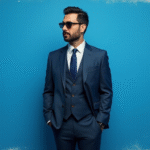Introduction to Agricultural Technology and Its Impact
Agricultural technology is revolutionizing the way farmers manage their crops and livestock. With threats from pests and diseases endangering the stability of the agricultural sector, the Food and Agriculture Organization (FAO) considers solutions based on artificial intelligence, blockchain, and drones as strategic allies to protect the profitability and sustainability of farmlands.
The Urgent Need for Advanced Technology in Mexico
In Mexico, the recent outbreak of the cattle warble louse has highlighted the urgent need to implement advanced technological measures. This insect, which took 30 years to eradicate in the United States, has prompted authorities and producers to adopt technological measures to prevent and mitigate its impact.
Examples of Technological Impact in Agriculture
- Intelligent Systems in Brazil: Artificial intelligence (AI) systems have been integrated for real-time crop control, allowing farmers to identify infection foci before they spread, thus avoiding millions of dollars in losses.
- Water Management in Uruguay: Sensor-based water management connected to neural networks has reduced water waste by up to 35%.
- Blockchain for Livestock Traceability: Companies are developing blockchain-based solutions for livestock traceability, ensuring compliance with sanitary standards and facilitating the identification of potential infection foci.
- Drones for Early Detection: The International Center for Tropical Agriculture (CIAT) states that drones equipped with thermal cameras and high-precision sensors enable farmers to detect affected areas early, allowing for localized treatment and minimizing the environmental impact.
Future Prospects: Automation and AI-Driven Machinery
Looking ahead, the automation of agricultural machinery based on artificial intelligence promises to increase field efficiency. Autonomous equipment capable of planting, fertilizing, and harvesting intelligently is being implemented in key producing regions. These systems not only optimize resources but also collect real-time data, generating reports that enable strategic decision-making based on accurate and up-to-date information.
Research and Innovation
Dr. Barlin Orlando Olivares Campos has developed AI-based predictive models to identify soil factors predisposing banana crops to Fusarium Wilt Tropical Race 4, improving disease prevention and management.
Researchers at IIAMA-UPV have created a methodology using teledetection and automated learning to identify irrigated vineyards, helping avoid overexploitation of aquifers.
An innovative project in the Canary Islands aims to eliminate field pests without using chemicals, employing AI and robotics to mechanize agriculture and tackle geographical challenges.
Amidst unprecedented challenges such as climate change, resource scarcity, and a growing global population, artificial intelligence emerges as a crucial tool to address these issues in the agricultural sector.
Key Questions and Answers
- What is agricultural technology? Agricultural technology refers to the application of advanced tools, systems, and methods in farming practices, including artificial intelligence, blockchain, drones, sensors, and automated machinery.
- Why is agricultural technology important? Agricultural technology helps farmers monitor and control risks, optimize resources, reduce economic losses, and ensure sustainability in the face of challenges like climate change, resource scarcity, and growing global demand.
- How does artificial intelligence benefit agriculture? AI enables predictive modeling, real-time data collection, and autonomous machinery, leading to improved decision-making, resource optimization, and reduced environmental impact.
- What are some examples of agricultural technology in action? Examples include AI-driven crop monitoring and control, blockchain for livestock traceability, drone-based pest detection, sensor-based water management, and automated agricultural machinery.






